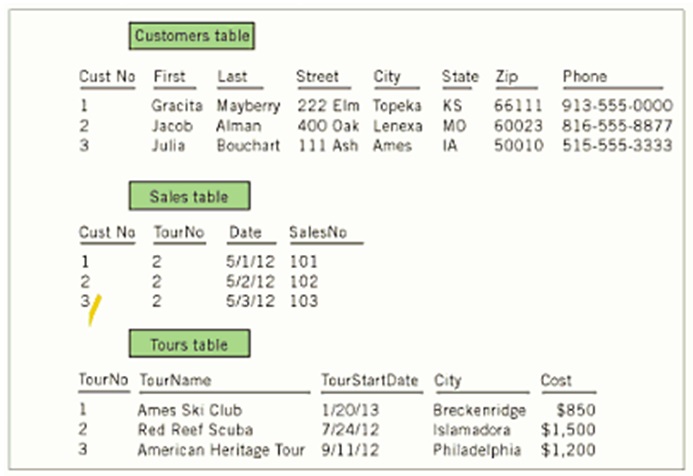Introduction
In the present competitive business environment, organizations are forced to incorporate technology in business undertakings. Development and implementation of information systems is thus a common activity in many organizations (Stair, Reynolds & Reynolds, 2009).
With proper implementation and use of information systems, businesses have been able to offer cost leadership, differentiate their products from those of competitors, and focus on identified market segments to better their profits. Whereas firms can develop their own information systems, a number of companies have developed software applications that may be used in business. Microsoft, for example, has developed office applications under different categories to help simplify user operations.
This paper discusses the benefits of using Microsoft Access rather than Microsoft Excel for data storage and manipulation. Both Access and Excel run on the Windows operating system. While Microsoft Access is relational database software used to manage data that is organized into lists such as information about customers, products, vendors, employees, projects or sales, Microsoft Excel is a spreadsheet program that may also be used to track business activities (Friedrichsen, 2010).
Usefulness of Converting Data from Spreadsheet to a Relational Database
Many small companies track customers, inventory and sales information in a spreadsheet program such as Microsoft Excel. Although Excel offers some list management features, Access provides many more tools and advantages for data management. The advantages arise from the fact that Access is relational in nature (Friedrichsen, 2010). Figure 1 and figure 2 compare the use of the two applications to capture business data.


Advantages of Using Microsoft Access for Data Management
There are several benefits that may be realized when one uses Access rather than Excel to manage data. One of the challenges of using Excel is the duplication of data and this is clearly eliminated when Access is used. The relational nature of the data stored in an access database allows the user to minimize duplicate data entry and this creates more accurate, reliable, and consistent information. Access also provides data entry forms that simplify the process of data entry and allow faster, easier, and more accurate data entry (Friedrichsen, 2010). Using Access, it is also possible to create and save queries, data entry forms, and reports that can be used over and over without having to recreate the particular data views. Access databases can also be encrypted and password protected to provide secure data storage. Unlike an Excel spreadsheet, a Microsoft Access database will allow more than one user to enter, update, and analyze data at the same time (Friedrichsen, 2010).
Disadvantages of Microsoft Access
Web databases are today very popular and exist as an integral part of most company operations. Using a web database can aid an organization and users to solve many problems in a much efficient manner. Even though it may be used in this way, Microsoft Access is a very unlikely candidate and numerous challenges may be experienced. The organization will require highly skilled personnel and the risk of data being corrupted may also increase. Maintenance needs also increase tremendously.
Conclusion
In spite of the challenges identified, Microsoft Access will offer a business an amazing data management experience. The organization will there benefit greatly by converting the data currently held in Microsoft Excel into a Microsoft Access database. With a skilled work force, the sales department will also benefit in the long run by allowing its database to be accessed through the Web.
References
Friedrichsen, L. (2010). Microsoft Access 2010: Basic. Boston, MA: Cengage Learning
Stair, R. M., Reynolds, G. & Reynolds, G. W. (2009). Principles of Information Systems. Boston, MA: Cengage Learning.